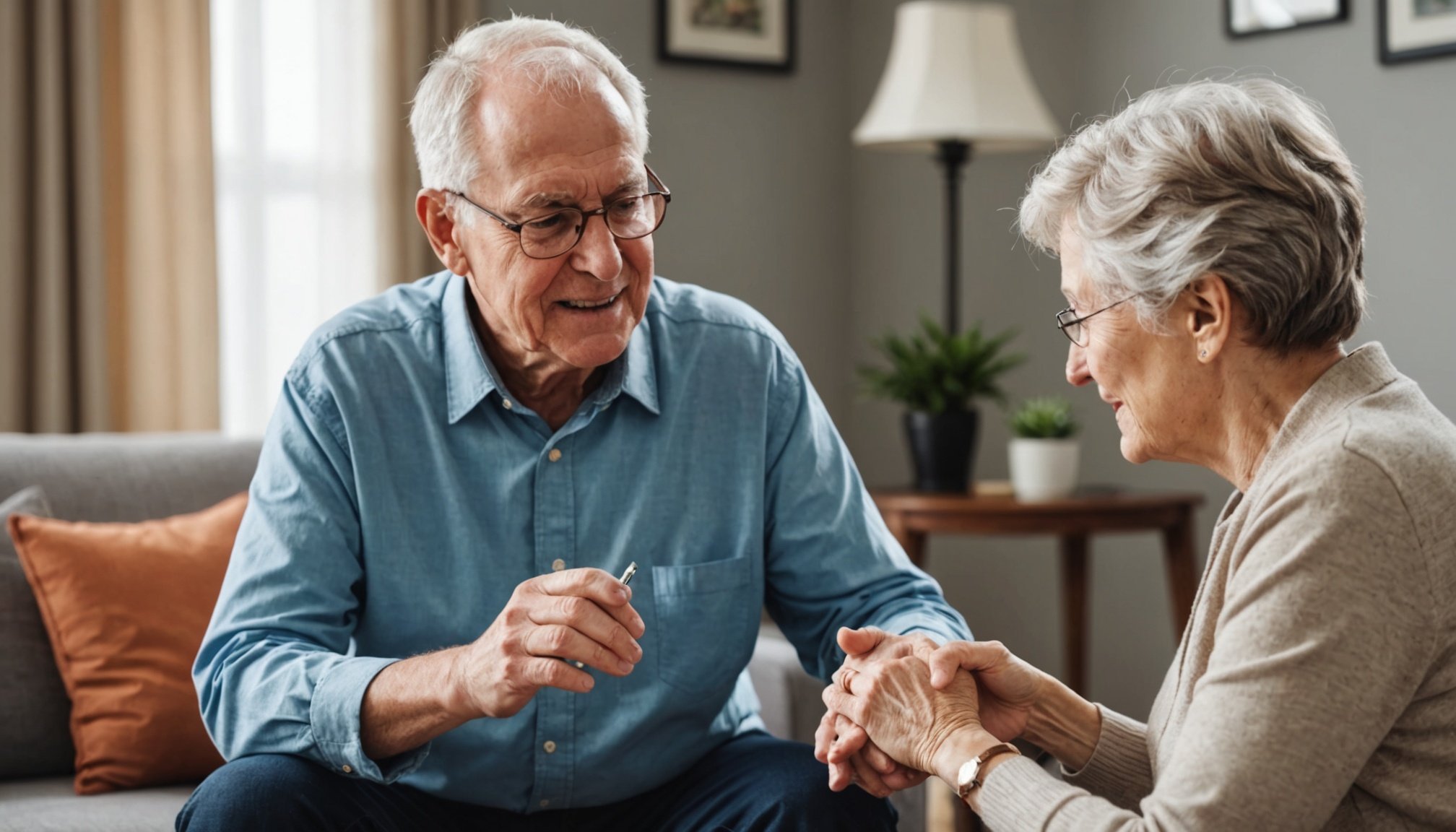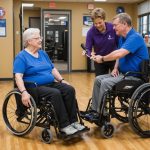Mastering Chronic Pain Management: Top Strategies for Seniors
Chronic pain is a pervasive issue that affects a significant portion of the senior population, impacting not only their physical health but also their emotional and social well-being. Managing chronic pain effectively is crucial for maintaining the quality of life and independence of older adults. Here, we will delve into the top strategies for seniors to master chronic pain management.
Understanding Chronic Pain in Older Adults
Chronic pain is more than just a physical sensation; it can be a complex and multifaceted issue that affects various aspects of an individual’s life. For older adults, chronic pain can be particularly challenging due to the presence of multiple comorbid conditions and the potential for polypharmacy.
Also to see : Key Features to Consider When Choosing Adaptive Clothing for Seniors: A Comprehensive Guide
“Chronic pain can lead to decreased function and activity, which can lead to worsened pain,” notes Dr. Abbas Asgerally, a pain management specialist at PeaceHealth’s Interventional Pain Clinic[2].
Common Causes of Chronic Pain in Seniors
- Arthritis: Conditions like osteoarthritis and rheumatoid arthritis are common among older adults and can cause significant joint pain[1].
- Musculoskeletal Issues: Back pain, hip pain, and other musculoskeletal problems are frequent due to wear and tear over the years.
- Neuropathic Pain: Conditions such as diabetes and nerve damage can lead to chronic neuropathic pain.
- Post-Surgical Pain: Some seniors may experience chronic pain following surgeries.
Comprehensive Assessment and Diagnosis
The first step in managing chronic pain is a thorough assessment and diagnosis. This involves understanding the underlying cause of the pain and its impact on the individual’s daily life.
Also to see : Top Strategies for Seniors to Stay Vibrantly Active This Winter
Tools for Pain Assessment
- Patient Self-Report: Using validated scales such as the Iowa Pain Thermometer or the Faces Pain Scale–Revised to assess pain intensity[5].
- Pain Behaviors: Observing facial expressions, vocalizations, body movements, and changes in activity levels or mental status.
- Proxy Reports: Gathering information from family members or caregivers when the patient is unable to self-report.
- Formalized Scales: Utilizing tools like the Pain Assessment in Advanced Dementia Scale for nonverbal patients[5].
Evidence-Based Interventions
Effective pain management often involves a multimodal approach, combining various interventions to achieve optimal results.
Physical Activity and Exercise
Physical activity is a cornerstone of chronic pain management. Here are some tips:
- Low-Impact Exercises: Engaging in activities like swimming, cycling, or walking, which are gentle on the joints[2].
- Stretching and Yoga: Practicing gentle stretches, yoga, or tai chi to improve flexibility and reduce pain[2].
- Regular Exercise: Maintaining a regular exercise routine to keep the body strong and healthy.
### Benefits of Physical Activity for Chronic Pain Management
- **Improves Strength and Energy**: Regular exercise helps maintain or improve physical strength and energy levels.
- **Enhances Mobility**: Keeps joints flexible and improves range of motion.
- **Reduces Pain**: Physical activity can reduce pain by releasing endorphins, the body's natural painkillers.
- **Boosts Mental Health**: Exercise has a positive impact on mental health, reducing symptoms of anxiety and depression.
Pharmacological Interventions
Medications play a crucial role in managing chronic pain, but they must be used judiciously, especially in older adults.
- Non-Opioid Medications: Using analgesics like NSAIDs or acetaminophen as first-line treatments[5].
- Opioid Therapy: For moderate to severe pain, opioids may be considered, but with careful monitoring due to potential side effects and risks of dependency[5].
- Topical Treatments: Applying topical creams or patches containing capsaicin, lidocaine, or other analgesics directly to the painful area.
Alternative and Complementary Therapies
Alternative therapies can provide additional relief and are often used in conjunction with conventional treatments.
- Massage Therapy: Massage can ease muscle pain and improve circulation[2].
- Mindfulness and Meditation: Practices like mindfulness meditation, deep breathing, and visualization can help manage pain by reducing stress and improving mental well-being[2].
- Natural Anti-Inflammatory Formulations: Using natural ingredients like turmeric, harpagophytum, and essential oils to reduce inflammation and pain[3].
Self-Management Programs
Self-management programs are designed to empower individuals to take control of their health and manage their chronic pain effectively.
Live Well Program
The Live Well program, developed by Stanford University, is an evidence-based health promotion program that helps participants manage chronic conditions, including chronic pain.
- Interactive Workshops: Participants engage in highly interactive workshops led by trained leaders, often non-health professionals with chronic diseases themselves[4].
- Skill Development: Learning skills such as managing pain and fatigue, improving nutrition, and communicating effectively with healthcare providers[4].
- Group Support: Benefiting from group support and problem-solving activities to enhance self-efficacy and confidence in managing health.
Support and Care
Support from family, caregivers, and healthcare providers is essential for effective chronic pain management.
Role of Caregivers
Caregivers can play a vital role in supporting older adults with chronic pain:
- Assisting with Medications: Helping with medication management to ensure adherence to treatment plans.
- Providing Emotional Support: Offering emotional support and companionship to reduce feelings of isolation and depression.
- Facilitating Physical Activity: Encouraging and assisting with physical activities to maintain mobility and strength.
Healthcare Provider Communication
Effective communication with healthcare providers is crucial for optimal pain management.
- Reporting Pain Accurately: Ensuring that pain is reported accurately and consistently to healthcare providers.
- Discussing Treatment Goals: Communicating treatment goals and expectations to ensure that the patient and healthcare provider are aligned[5].
- Regular Follow-Ups: Scheduling regular follow-up appointments to monitor progress and adjust treatment plans as necessary.
Practical Tips for Managing Chronic Pain
Here are some practical tips that can help seniors manage chronic pain on a daily basis:
Lifestyle Modifications
- Maintaining a Healthy Weight: Reducing weight to alleviate pressure on joints and improve mobility[1].
- Wearing Comfortable Shoes: Choosing shoes with adequate arch support and cushioning to reduce foot pain[1].
- Avoiding High-Impact Activities: Limiting activities that put excessive stress on the body, such as running or jumping[1].
Using Assistive Devices
- Canes and Walkers: Using canes or walkers to reduce strain on joints and improve balance[1].
- Orthotics and Braces: Utilizing orthotics and braces to provide additional support and stability[1].
Managing Stress
- Engaging in Relaxation Techniques: Practicing relaxation techniques such as deep breathing, visualization, or mindfulness meditation to reduce stress and pain[2].
- Joining Support Groups: Participating in support groups to connect with others who are experiencing similar challenges[2].
Managing chronic pain in older adults requires a holistic approach that incorporates physical activity, pharmacological interventions, alternative therapies, self-management programs, and strong support systems. By understanding the causes of chronic pain, using evidence-based interventions, and making practical lifestyle modifications, seniors can significantly improve their quality of life and master the challenges of chronic pain management.
### Key Takeaways for Seniors
- **Stay Active**: Engage in regular physical activity to maintain strength and mobility.
- **Use Multimodal Treatments**: Combine different treatments such as medications, physical therapy, and alternative therapies.
- **Join Self-Management Programs**: Participate in programs like Live Well to develop skills in managing chronic conditions.
- **Seek Support**: Leverage support from caregivers, family, and healthcare providers.
- **Manage Stress**: Practice relaxation techniques to reduce stress and improve overall well-being.
By adopting these strategies, older adults can take control of their chronic pain and live a more fulfilling and independent life.











